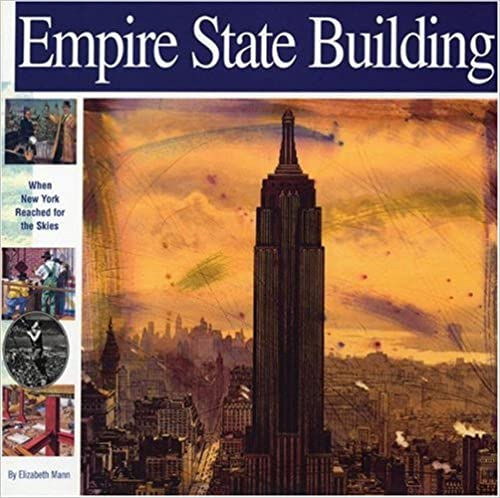
by Elizabeth Mann
(Wonders of the World Book)
Nonfiction/Engineering
Recommended for: Dialectic students
48 pages
Mikaya Press
This is a wonderful book that hits all the bases. All phases of are covered, from the original architectural plans, to the engineering aspects, and finally construction. In addition to short bios of those who conceived of the structure, Mann also focuses on the everyday workers that built it. Science is presented clearly, with everything from construction techniques (including sequential diagrams of steps and a month-by-month calendar of progress) to the physics of the project is expressed in easily accessible language. The importance of problem solving throughout the project is stressed. Interesting tidbits about things like how food and building materials got to the upper stories during construction keep the narrative fresh. Lots of black and white primary source photos show stages of development as the building rose from the ground and give views of the changing New York City skyline.
To the people of New York City, the construction of the Empire State Building was far more than a building going up in midtown Manhattan. Built during the Great Depression, the building employed approximately 3,400 workers daily and paid them a living wage. Designed to go up quickly, the structure took just over a year, 410 days, to build, far ahead of the anticipated schedule. During its fastest phases, more than four stories were added to the frame each week. Not only was the building phase speedy, the entire process was--from the beginning of the design process to the ceremonial turning-on of the lights took just twenty months.
It was also a symbol of hope to residents caught in the grip of unemployment, showing them in a very visible way that somebody believed America would beat the Depression and showed it by constructing the tallest office building in the world--offices which would eventually be filled with steadily employed people. Her Art-Deco beauty brought New Yorkers pride and gave them something lovely to brighten their gray days. Originally, though, less than 25% of the building was rented; to disguise the fact, lights were turned on throughout the building. It would be World War II before the building began turning a profit.
On 1 May 1931, when the Empire State Building opened, it was, at 1,250 feet high (1,454 if you counted the lightning rod), the tallest building in the world, an honor it would hold until 1972, when New York's World Trade Center opened.
If you think that 9/11 was the first time a plane flew into a New York skyscraper, think again. In 1945, a pilot became turned around in heavy fog and crashed his B-25 bomber into the 78th and 79th floors of the building. The plane exploded, killing three crewmen and eleven people in the building and setting several floors ablaze. The NYFD valiantly fought the inferno, at the time the highest fire in their history, putting it out in just forty minutes! The structure was deemed sound and the other floors were business as usual just two days later.

Comments